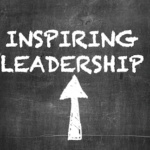
Let’s be honest most people approach personality assessments like reading a book, read it once, remember a couple ideas that resonate and place it on a shelf to gather dust. One question I often hear is, “which personality assessment should we use?” My response is generally the same, if it’s one of the top 5, it doesn’t really matter; but don’t read it like a book. What really matters is that you are clear on the purpose of a personality assessment and work to ensure it achieves that purpose. To do this means you approach it like a project and use it as a tool, rather than reading it like a book.
So what is the purpose of a personality assessment? Well, on the individual level there are two primary purposes, to increase self-awareness and to improve self-regulation. Self-awareness is a conscious knowledge of one’s traits, feelings, behaviors, thinking patterns and tendencies. This is where personality assessment value is most obvious, in general they provide a framework for understanding these components of ourselves. While the terminology may differ from one assessment to another, the general value is similar. Each of them offers empirically supported information with regard to areas of self-awareness. To achieve this purpose requires that one is open to feedback and chooses to accept the bad along with the good and to acknowledge the risks along with the benefits. Many people have a surface level fascination with the good and the benefits, without considering the bad and the risks. This is where thinking of it like a project in that you 1) are clear and committed to what you’re working toward 2) are honest with yourself about the available resources (ie. the benefits or strengths of your personality) and 3) call out the risks and barriers (ie the risks or weaknesses of your personality). One useful activity to ensure the personality assessment increases self-awareness is to take the words off the screen (or page) and make them real by adding examples and depth. I recommend people take the top 2-3 areas they would like to focus on, both strengths and weaknesses, and approach others for feedback. Tell them what you’re focusing on and why and then ask them for ways they have seen those traits or tendencies within your work. Doing this will provide you with real examples and stories that bring the assessment to life, it also makes it easier to recognize when you are leveraging those strengths or succumbing to weaknesses as you move forward.
The second purpose of personality assessments is to improve self-regulation, which is the ability to adapt and control your thoughts, feelings and behaviors to be consistent with your values and long-term interests. The ability to self-regulate is dependent on the degree of one’s self-awareness. So, unless you have approached self-awareness like a project, self-regulation will be inhibited. This is where your personality assessment should be utilized as a tool. When one reads a personality assessment like a book, they will assess the results according to readily remembered experiences; either something that was very important or something that occurred recently. When it is used as a tool, you frame and assess ongoing experiences through the lens of your assessment. The first step is to get very clear about what you’re trying to achieve. Esteemed professor Robert Quinn recommends asking the question, “What results do I want to achieve?” This is important, because how you answer this question will dictate how you leverage your strengths and how you minimize your weaknesses. As I tell organizations, if you don’t know where you are going, any leader can get you there. The same goes for individuals, if you don’t know where you’re going, any behavior or thinking will get you there. A second recommendation is to perform a review every 30 days, where you assess situations and experiences from the previous 30 days, evaluate how you leveraged your strengths effectively, as well as how your risks or weaknesses dominated. Consider how you will better leverage strengths over the next 30 days and how you will control and minimize the risks according to the results you want to achieve. Then perform this evaluation again in another 30 days, the more consistent and intentional you are about this, the better you will get at self-regulating.
Now, before we shift the conversation and speak to the value of personality assessments for teams, I want to give you the “so what?” Studies have shown that self-awareness and self-regulation, which are both components of emotional intelligence, account for a huge portion of leadership effectiveness (see HBR’s What Makes a Leader?). This seems intuitive, if you aren’t aware of your thinking patterns and behavioral tendencies you will struggle to appreciate those of others. If you don’t self-regulate you will only lead effectively in a small set of situations and with a specific type of individual. Whereas if you have high self-awareness you will appreciate how others think and solve problems and lead a variety of individuals in a variety of situations effectively. This is true with business and personal relationships.
So, in addition to the question about which assessment, the other question I hear often is, “I’ve already taken one of these, why do I need to take another one?” This question comes up when a team or organization is administering a personality assessment. The short answer is that in this situation it isn’t just about individual self-awareness and self-regulation, it’s about team and organization effectiveness. By understanding ourselves, as well as the thoughts and actions of others, we reduce the number of assumptions we have to make. When we have a framework to evaluate the thoughts and actions of others, we are better enabled to evaluate why people are thinking and behaving the way they are, less likely to take offense, more likely to appreciate and respect differences and more capable of leveraging the strengths of others. As to why you can’t just use your old assessment, the ability to do each of these things is found in the team having a common language and framework. This helps remove ambiguity from conversations, talk about needs, plan and organize efforts effectively by having the same understanding of concepts.
Keep in mind that the same rules apply in a team environment. 1) be clear and committed to what you’re working toward as a team 2) be honest about the available resources (ie. Team personality strengths/leveraging team diversity) 3) call out the risks and barriers (ie. Team personality clusters or gaps) and 4) periodically review and evaluate team efforts, successes and mistakes.
Taking these steps will help ensure that real value comes from personality assessments and that you make the most of your most valuable resource…your people.




Kyle Brost is ready to help you harness your innate potential to get what you want from your business. Utilizing The Art of Strategic Reaction, Escalate, and many other tools, Kyle can take your team from reactionary to rational, from solely profit-focused to increasing returns.
2022 © Kyle Brost | All Rights Reserved